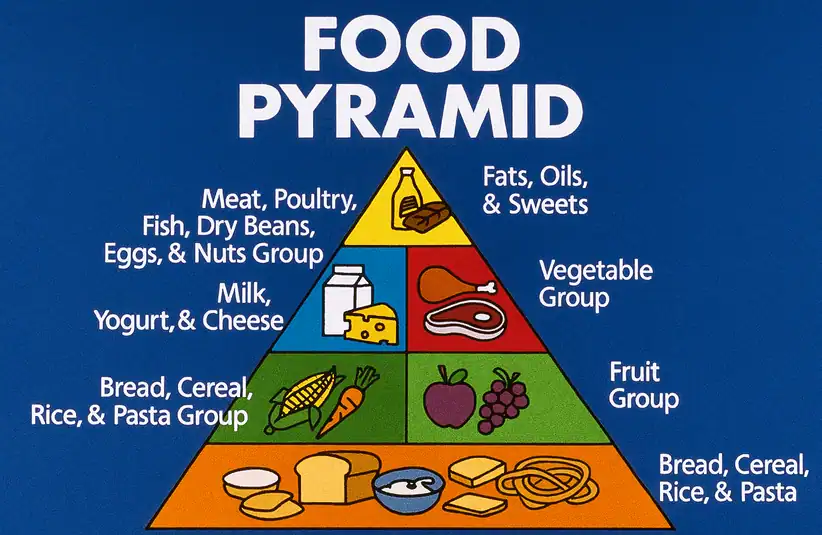The Food Pyramid is Making a Comeback in 2025 | Trump Admin is Looking with New Eyes
Remember the food pyramid? That giant triangle poster that haunted school cafeterias and told us to eat bread like it was oxygen? Yeah, that one. Well, guess what — it’s back. In 2025, the Trump administration is reportedly dusting off the old pyramid and giving it another shot. It’s like déjà vu, except instead of neon snack dust, we’re talking about a chart that convinced a generation carbs were king.
Why the Food Pyramid Won’t Stay Buried
The food pyramid was supposed to be retired years ago. MyPlate came along in 2011, with its neat little circle and balanced portions, and everyone thought the triangle was gone for good. But here’s the thing: the pyramid had spectacle. It was bold, it was memorable, and it was plastered everywhere from classrooms to doctor’s offices. MyPlate? It looked like a dinner plate diagram. Useful, sure. Iconic? Not even close.
So now, the administration is looking at the food pyramid with fresh eyes — maybe because nostalgia sells, maybe because it’s easier to teach, or maybe because triangles just look more dramatic than circles.
What the Pyramid Actually Said
Let’s break it down like we’re back in health class:
- Base layer: Grains. Six to eleven servings a day. Yes, eleven. Bread, pasta, cereal — basically a carb buffet.
- Middle layers: Fruits and veggies. The “eat plenty” section, though somehow always overshadowed by the bread pile.
- Next tier: Proteins and dairy. Meat, beans, milk — moderation was the word.
- Top tier: Fats, oils, sweets. The “use sparingly” zone, which everyone ignored because dessert exists.
It was simple, maybe too simple. Critics said it pushed refined carbs and didn’t distinguish between whole grains and white bread. But it stuck in people’s heads.
The Politics of Nostalgia
Bringing back the well-remembered food pyramid isn’t just about nutrition. It’s about symbolism. The chart is burned into the collective memory of anyone who grew up in the ’90s and 2000s. It’s a throwback, a cultural artifact, and maybe a way to say: “See, we’re returning to the basics.” Whether that’s good policy or just good marketing is up for debate.
The Big Question: Does It Work?
Here’s the problem. Nutrition science has moved on. We know carbs aren’t all equal, fats aren’t all evil, and balance matters more than stacking food groups like Lego bricks. The pyramid was catchy, but it was also misleading. MyPlate tried to fix that, but it never had the same cultural punch.
So now we’re left wondering: is this comeback about helping people eat better, or about reviving a chart everyone remembers?
Final Thought
The food pyramid’s return in 2025 feels less like a revolution and more like a rerun. It’s a chart that shaped decades of eating habits, for better or worse, and now it’s back on the table. Maybe it’ll help, maybe it’ll confuse, but one thing’s certain: triangles make headlines.
Disclaimer
This article is intended for informational and editorial purposes only. It reflects commentary on nutrition policy and cultural history. It should not be taken as medical advice or dietary guidance. Readers with health or nutrition concerns should consult a qualified professional.







